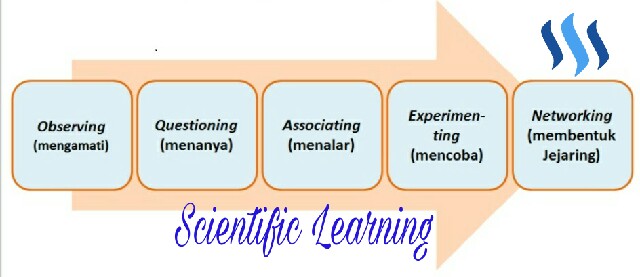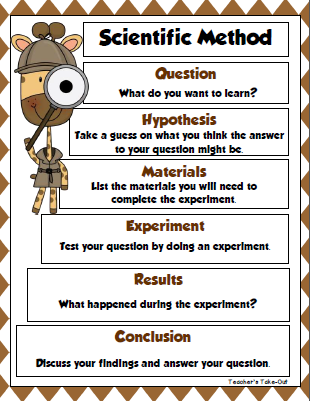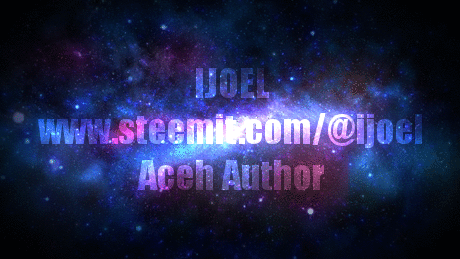What is scientific Learning?
This learning is often interpreted as a scientific approach. It is said to be a scientific approach because there is a non-scientific approach. With this approach, the learning process must be guided by the rules of the scientific approach. This approach is characterized by the preference of dimensions of observing, Questioning, associating, experimenting, and networking. in the sense, in this learning process must be guided by the principles of the scientific approach. This approach is characterized by the preference of dimensions of observation, reasoning, discovery, validation, and explanation of a truth.
In Indonesia, In the implementation of Curriculum 2013 in Indonesia's schools, one of the things that must be done by teachers is to implement learning by using a scientific approach, because this approach is more effective than non-scientific learning.
Therefore, the government of Indonesia through the ministry of education, every year to carry out various training and socialization of the curriculum 2013, one of which is to form a teacher organization which in indonesia language called "Musyawarah Guru Mata Pelajaran (MGMP)" in English Language "Deliberation of Subject Teachers".
In every meeting of teachers who are members of this organization, always discussed and discussed is about the syllabus of learning by using scientific approach. and the 2013 curriculum requires teachers to implement learning in the classroom by using scientific principles as recommended by the curriculum of 2013.
This times, I was interested in discussing about scientific learning because I think that 's a very effective learning model for now.
How The Steps of Scientific Learning ?

This's a image of the steps of scientific learning that given by my tutor for me when I took part in MGM training in Bireuen. and this image is provided in the form of a PDF file.
The learning process is called scientific if it meets the following criteria :
- Substance or learning material based on facts or phenomena that can be explained by certain logic or reasoning; not limited to the imagination, fantasy, legend or fairy tale alone.
- Teacher's explanations, learners' responses, and teacher-student educational interactions are free from the immediate prejudice, subjective thinking, or reasoning that diverges from the logical thinking flow.
- Encourage and inspire learners to think critically, analytically and appropriately in identifying, understanding, solving problems, and applying substance or learning materials.
- Encourage and inspire learners to be able to think hypothetically in seeing differences, similarities, and links to each other from substance or learning materials.
- Encourage and inspire learners are able to understand, apply, and develop rational and objective thinking patterns in response to the substance or learning materials.
- Based on empirical concepts, theories and facts that can be accounted for.
- Learning objectives are formulated in a simple and clear, but interesting presentation system.
Discussion
Based on the definition and prisip of learning that must be combined with scientific principles, it can be concluded that the steps in the implementation of learning with scientific approach is as follows:
1) Preparation Implementation of learning with Scientific approach
Preparation of important learning done by educators for implementation learning can run smoothly. One of the things that need to be prepared by educators in the learning process is Lesson Plans (in the curriculum of Indonesian education called RPP) . Lesson Plans (RPP) becomes the educator's reference about what educators will do and what learning medium are necessary prepared to achieve competence basis. Preparation will determine process of learning implementation take place. With there of good preparation, then the learning process will run optimal. Educators have prepared RPP as a reference in carrying out the process learning. Educators have regularly made RPP for each one learning unit. RPP made by educators should be appropriate with the Scientific approach, the curriculum applied, and characteristics of learners and contains five learning steps, namely: observing, asking, trying, reasoning and communicating. learning is time constraints, media and tools and assessment rubrics should be replaced each unit of learning. Solution which is attempted in the preparation of the tool and materials, that is with the cooperation educators and learners.
2) Learning Stage with Approach Scientific (observing, questioning, associating, experimenting and networking)
Learning Stage with Approach Scientific (observing, questioning, socializing, experimenting and networking)
An Observing This stage of observation is done after the introduction learning by recalling the lesson material learned at the previous meeting to the learner. At this stage, the educator asks back the previous teaching material the student has learned. After There is feedback, educators continue to provide explanations of teaching materials to be delivered at the present time. Educators, start learning by giving opportunities for all learners to tell personal experiences based on the understanding and experience appropriate teaching materials to be studied.
Observing
Observing activities not only activities conducted in the classroom, but also done outside the classroom tailored to the teaching materials. In observing activities, learners are more focused and time spent adapting to the needs and teaching materials. Then the time used in the observation stage can not be limited. Observing activities shows that learners are more active. the final result in the observation stage can be in the form of a statement, both oral and written questions.
The time available for studying at our school (SMPs Ummul Ayman Samalanga) for 1 hour face-to-face lesson only 30 minutes. and this is becomes an obstacle for us (teachers) to apply scientific learning because the time is very limited. Specifically, to implement scientific learning requires media and tools and assessment rubrics to be replaced for each learning unit. Solutions are sought in the preparation of tools and materials, namely by the cooperation of educators and learners. I have done this thing, so with the cooperation between students and educators, then with a very limited time, we can apply scientific learning. although the results are not the same as those achieved by other schools with long hours of study.
beside, Observation in the scientific learning is giving emphasize the meaningfulness of the learning process. This method has certain advantages, such as using a real object media, learners happy and challenged, and easy to implement. In practice, the process of observation requires a long and mature preparation time, relatively high cost and power, and if uncontrolled will obscure the meaning and purpose of learning.
Questioning
Questioning stage is done by making observations in advance through the images contained on the material and based on the experience of the participants
Educator Educators train learners by getting used to making inquiries after a stimulus to the emergence of activities. Average asking activity. Activities already listed. However, educators also provide opportunities for learners to travel independently ha have been listed in thematic books. The types of questions raised by the average learner. Questions posed according to ability at that age. Educators also always emphasize to learners to be able to ask questions that include what, why, when, where, and how.
Associating
The associating stage is done at any time in accordance with the creativity of educators in stimulating learners to keep participating in learning activities. The associating stage is also done by recalling the learner's experience tailored to the material being studied. Learning activities at the stage of associating is implemented by developing the interpretation of learners. Various things that can be associated with learning materials such as from the material or reading, explanation of educators and the experience of learners. Learners develop knowledge by understanding cause and effect conclude different opinions.
Experinting
Implementation of learning with scientific approach at the experimenting stage can be done at any time, in accordance with the material that has been prepared. During the research, the stages of experimenting to do in the classroom. At this stage of the experimenting is closely related to the associating stage, because this activities (experimenting), usually begins or ends with reasoning in accordance with the experience of the learners. Experimenting can also be done in the form of tasks, learning activities at the stage of experimenting be adapted to the material. The validity of the information collected in the learning activities at the stage of experimenting is quite good, because it is obtained from anywhere source in accordance with the needs and materials. Information can be obtained from anywhere including the internet, book and neighborhood around.
Learning activities at the stage of experimenting to do in a simple way in accordance with the age of learner. Source of information used is obtained from anywhere including from the environment. The tools used are also tailored to the needs and teaching materials delivered.
Networking
Networking (collaborative) learning is a personal philosophy, much more than just learning techniques in school. Collaboration essence is the philosophy of interaction and lifestyle of human that put and interpret cooperation as interaction structure which is designed well and intentionally to facilitate collective effort in order to reach common goal.
Conclusion
The scientific approach means the basic concept that inspires or underlies the formulation of teaching methods by applying scientific characteristics. The approach of scientific learning (scientific teaching) is part of a pedagogical approach to the implementation of learning in the classroom that underlies the application of scientific methods.
Definition of the application of scientific approach in learning not only focus on how to develop students' competence in making observations or experiments, but how to develop knowledge and thinking skills so as to support creative activities in innovating or working.
If created a scheme of scientific methods in learning, then can created a scheme of scientific learning activities as in the following figure.

References:


If you love science? then join us at steemstem using @science tags and @steemstem, you can also chat with us at steemstem chat. channel.
great job
Downvoting a post can decrease pending rewards and make it less visible. Common reasons:
Submit
Siip mas, informasi yang berguna.
Downvoting a post can decrease pending rewards and make it less visible. Common reasons:
Submit
This post recieved an upvote from minnowpond. If you would like to recieve upvotes from minnowpond on all your posts, simply FOLLOW @minnowpond
Downvoting a post can decrease pending rewards and make it less visible. Common reasons:
Submit
@ijoel got you a $8.97 @minnowbooster upgoat, nice! (Image: pixabay.com)
Want a boost? Click here to read more! @originalworks
Downvoting a post can decrease pending rewards and make it less visible. Common reasons:
Submit
The @OriginalWorks bot has determined this post by @ijoel to be original material and upvoted it!
To call @OriginalWorks, simply reply to any post with @originalworks or !originalworks in your message!
To enter this post into the daily RESTEEM contest, upvote this comment! The user with the most upvotes on their @OriginalWorks comment will win!
For more information, Click Here!
Special thanks to @reggaemuffin for being a supporter! Vote him as a witness to help make Steemit a better place!
Downvoting a post can decrease pending rewards and make it less visible. Common reasons:
Submit